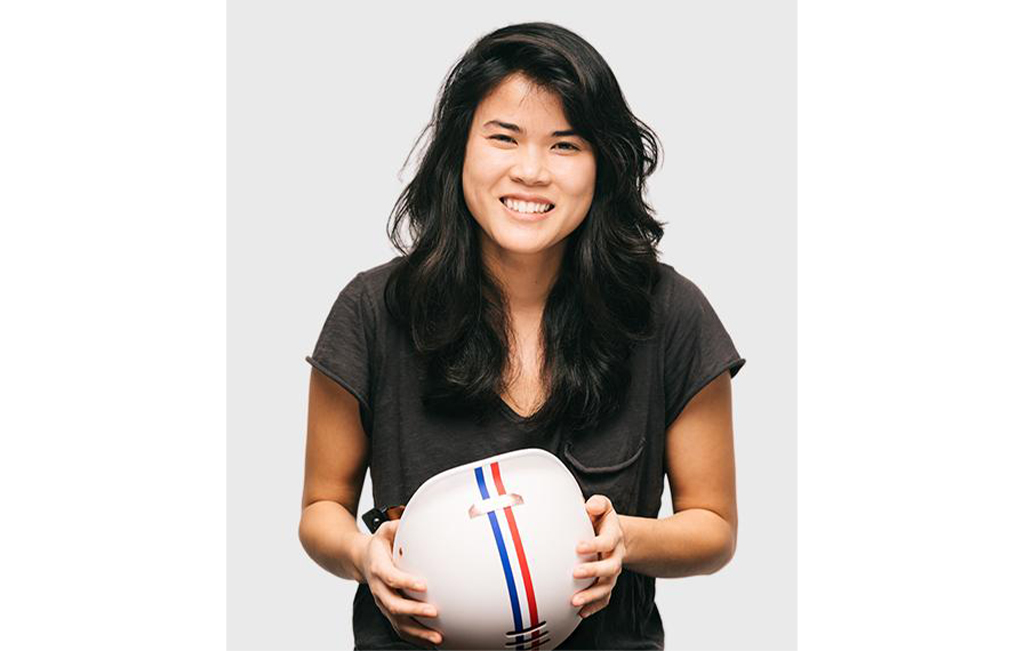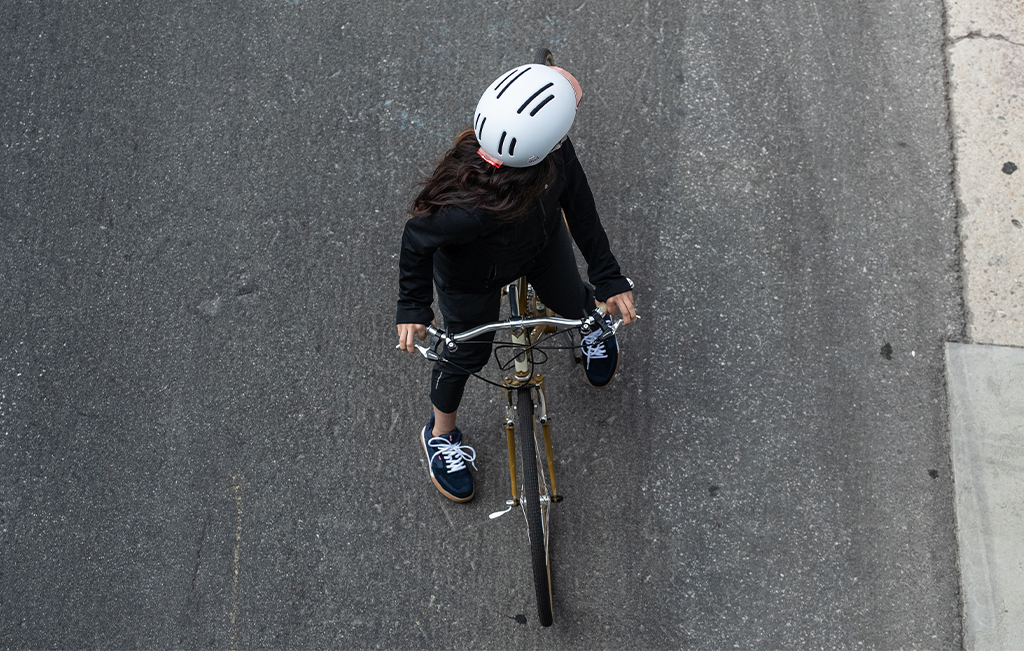When lifelong cyclist Gloria Hwang heard that her friend had died in a head-first bicycle accident in New York City, she wanted to know one thing: Was he wearing a helmet? But as Hwang grappled with the loss of life, she already knew the answer. Her friend had skipped his helmet probably for the same reason that she often ditched hers while commuting: style.
Today, Hwang is the founder and CEO of Thousand, so-named for the number of lives she wanted to save by designing bike and skateboard helmets people actually want to wear. Hwang says that her friend’s death spurred her into action, officially launching the brand in 2016, but the idea had been brewing in her mind for years. So, too, was her belief that businesses can and should do good.
After graduating in 2009 with a B.S. in psychology from the University of Texas at Austin, Hwang knew she wanted to make a social impact. That landed her with Habitat for Humanity International, a nonprofit that helps families build and improve places to call home. But while she loved coordinating the volunteer program, Hwang also felt that it was too difficult for her to enact sweeping change within the nonprofit structure. So, when a 15-person shoe company called TOMS came knocking in 2010, she jumped at the chance to grow their philanthropic division.

Gloria Hwang (Courtesy of Thousand)
“For the first time, everything clicked,” Hwang remembers. “In the nonprofit world, the ability to do good is limited by the ability to fundraise. But with TOMS, our social-impact interests and our revenue interests aligned. Using business for good or as an accelerator really made sense to me.”
For five years, Hwang focused on social entrepreneurship. She worked exclusively on the giving side of the brand, measuring impact and helping higher-ups understand where their programming was the most efficient and how they could best help people on a global scale. Her key takeaway? When a business does good, people notice. The more social projects the brand took on, the better the numbers.
When Hwang’s friend died in the cycling accident in 2013, she felt professionally equipped to launch Los Angeles-based Thousand three years later. At the time, many other helmet makers were focusing on the functional aspect of head protection. But Hwang wanted something different for Thousand; she wanted to create a brand that appealed not only to people’s sense of safety but connected to their personal values.
Her first challenge was fixing the branding problem of helmets. Though recreational cyclists and mountain bikers almost always wear helmets, the same isn’t true for commuters and more casual users. “I had to figure out the difference and understand why the discrepancy existed,” Hwang says.
So, she got to work. Hwang surveyed 50 cyclists and learned that those commuters and more casual users don’t typically care about the traditionally marketed features like breathability and lightweight materials. Instead, they focus more on style and how easy it is to carry the helmet to and from the office.
“The only way to overcome this barrier and save more lives was to rebrand helmets,” Hwang says.

The new Chapter MIPS (Courtesy of Thousand)
So that’s what Thousand did, creating stylish helmets packed with sneaky tech. Take the Chapter MIPS, the brand’s latest addition to its retro lineup. Specifically designed for urban commuters, the helmet has a rechargeable, 50-lumen magnetic light that attaches to the back of the helmet and pops off so cyclists can take it anywhere. It also has a dial for custom fit, eight vents and MIPS, which helps protect your head against rotational force and brain injury in a crash.
Another unique component is the PopLock. When a commuter arrives at work, they can snake their U-lock through a channel hidden beneath the helmet’s logo to secure it to the bike and rack.
But Hwang is quick to note that it isn’t just about product. She’s taken much of what she learned at TOMS about giving back and applied it to Thousand, with a strong bent toward sustainability and social impact.
The company says it’s committed to making high-quality gear “without unnecessary harm to the planet.” To that end, in 2019, it became carbon neutral, which means that it achieved a net-zero carbon footprint by offsetting the carbon emissions it couldn’t eliminate. Thousand is one of more than 145 brands that joined the independent nonprofit Climate Neutral, which certifies that brands measure, reduce and offset their emissions.
But Thousand took it one step further in April, when it announced it was “climate positive.” That means the company offsets 110 percent of its emissions, which in 2019 was about 1,228 metric tons; it bought carbon credits that pay for projects that remove carbon from the atmosphere. This isn’t an easy feat, Hwang says, especially for a product-based brand that must adhere to stringent safety standards. She changed the warehouse configuration and location, then switched to a new supplier that focused on cleaner products to help cut back emissions.
“Personally, I believe climate change is the biggest threat to our generation, so it feels very poignant to hit that climate positive mark,” Hwang says.
Thousand is also a member of 1% for the Planet, which means it donates 1 percent of its annual revenue to environmental initiatives. And after a few years, Thousand became a benefit corporation—a for-profit entity legally required to create a positive impact on society, employees and the environment. The company also gives each of its 21 employees $1,000 annually to donate to the cause of their choice.
“The way you do business matters,” Hwang says. “We want to create as much as value as possible for the people in our community and the planet.”
For more stories of brands doing good work, visit our Good Gear landing page.
